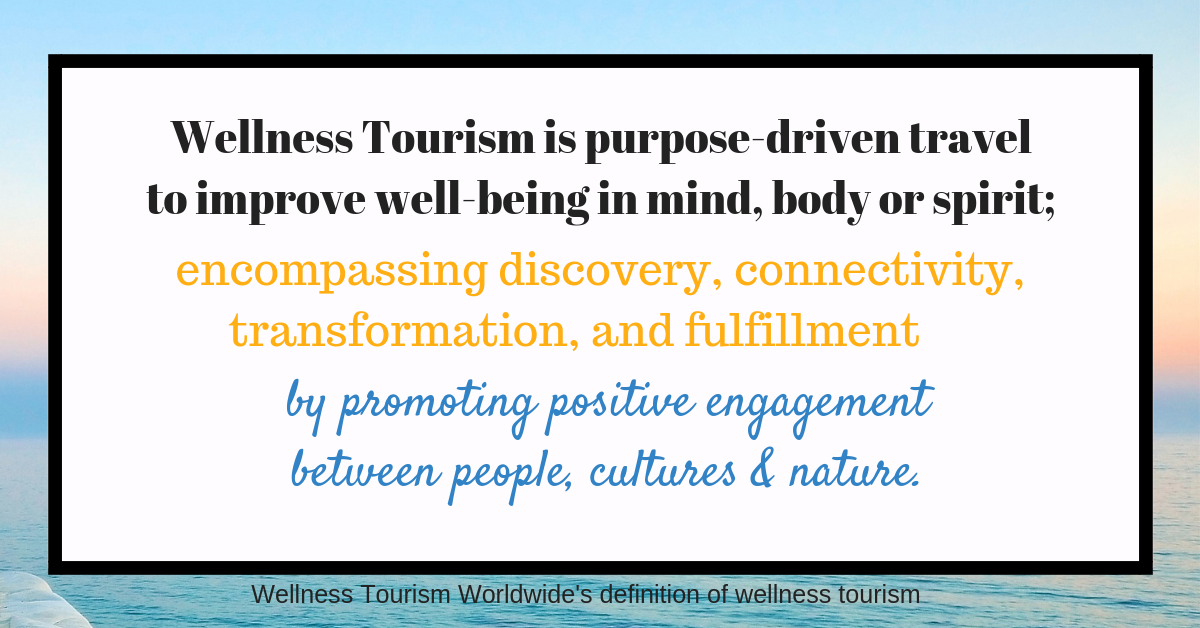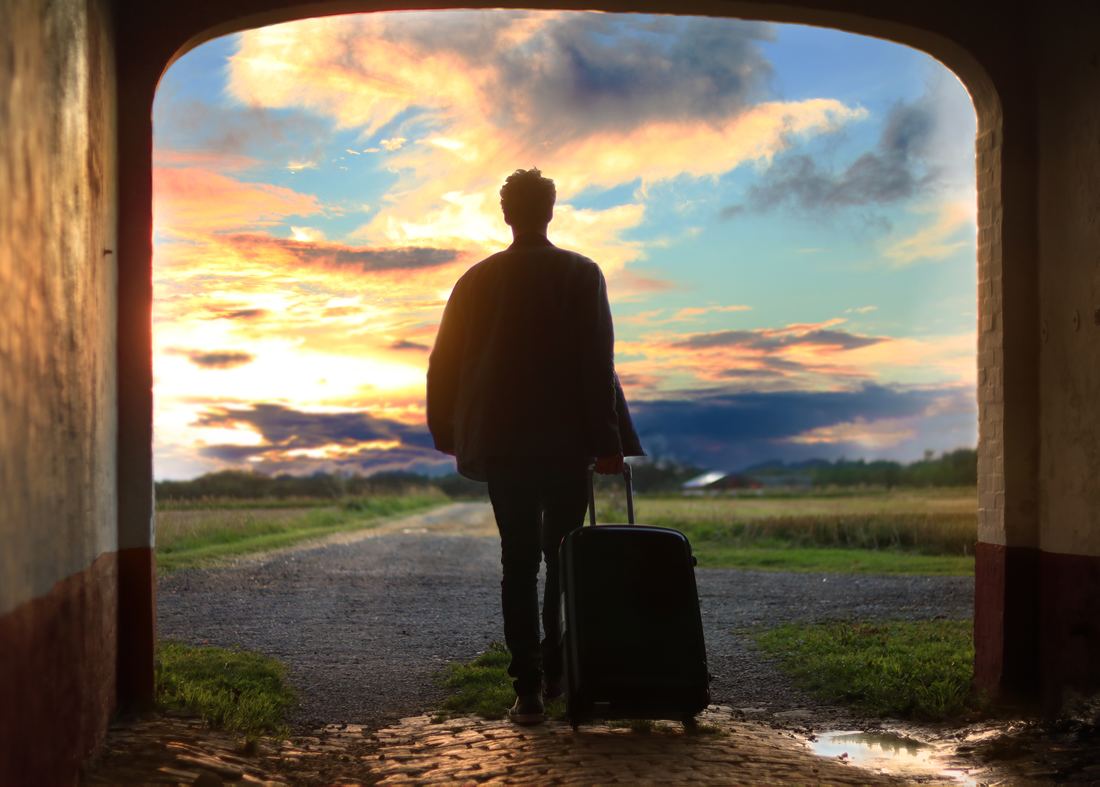|
There’s no disputing that wellness has moved from a trendy travel category to a tourism industry powerhouse, changing the way airports, airlines, hotels and destination marketers respond to customer’s physical and emotional needs and expectations. In 2015, I presented “How Wellness Has Changed Travel” at ITB Berlin (the recap is available here) and talked about wellness as a business strategy. This article is based on previous research with important insights from other industry thought leaders along with a few new insights of my own. Outdated Views of Wellness Tourism Require a New PerspectiveAs a new travel category, it’s still evolving and being shaped; therefore this is a critical time for wellness tourism. How it is understood NOW, will have a lasting impact on how its being developed and promoted, affecting consumers, businesses, destinations and their communities. Recent articles suggest that spas provide fragmented and disconnected services with a cookie cutter approach to programs. “Wellness washing” has crept up as a threat by labeling products and services as wellness, when they are not, as was the case when a major spa marketing company touted “wellness deals” including bikini waxes and hair color. Prevailing definitions are already outdated. Take for example, “Wellness tourism is travel associated with the pursuit of maintaining one’s personal wellbeing” focusing on a single person. While it is a good start for a definition, this simple phrase reinforces one dimension, when in fact, wellness is multi-dimensional. Humans are social animals, requiring connection to thrive. Loneliness is now considered a great danger to personal health and a growing threat to community wellness. Wellness is about how we relate to ourselves, to others and to the planet. Ta-Da! A New Definitition of Wellness Tourism & Why It Maters To move away from an outdated self-centered approach in a manner that addresses wellness as fully-functioning in the world, I’d like to introduce a new definition of wellness tourism based on a year-long review of wellness concepts, positive psychology, motivation theory and achievement theory, first published in Wellness Travel: Shaping America’s Health & Economy. “Wellness tourism is purpose-driven travel to improve well-being in mind, body or spirit; encompassing discovery, connectivity, transformation and fulfillment promoting positive engagement between people, cultures and nature.” (Wellness Tourism Worldwide, 2014, 2017) Our research shows that emotional wellbeing is as important, if not more than physical health to wellness travelers which is consistent with CBRE’s report, Trends in the Hotel Spa Industry that shows spa treatments are being booked to offset stress. Better Conceptualization of Wellness Tourism Results in Better Program & ServicesThis new definition provides an entirely new way of understanding wellness tourism in a more comprehensive way aligned with the multi-dimensionality of wellness – and – a better definition of wellness tourism can offer insight into maximizing hotel spa revenue by creating better products, experiences and promotions. Research shows purpose is a key to longevity and living well. Environmental speaks to protecting land, air and water quality as well as wildlife. Cultural wellness refers to having respect for diversity and way of life that extends to food, fashion, art, literature, architecture, language and other unique differentiators. While the previous example of wellness tourism didn’t specify other people and maintaining positive relationships, positive human interaction is central to wellbeing. For travelers this includes fair trade, buying local, supporting jobs, and treating others well. Over-tourism is a growing concern prompted by local residents, hosts, and business owners who experience the negative impact on the host community including overcrowding, degraded environments and encroachment on wildlife. A comprehensive definition of wellness tourism gives more direction for product development, service delivery and promotion. It is the cornerstone to understanding the wellness traveler and critical steps to engagement. Hotels and spas have adapted quickly by integrating new programs, products and staffing – from digital detox initiatives to mindfulness and gratitude practices. "For hoteliers, ancillary wellness services can be a good source of additional income, without the need to invest in becoming a “wellness resort.” states Andrew Cohan, Managing Director of Horwath HTL based in Miami. Wellness Travel Inspires TransformationMore consumers seek experiential travel with the idea of returning home a better, more aware person. There is surging global demand for trip experiences that create deep emotional connections. In response, travel brands are developing, more personalized, intimate services that focus on local immersion of culture, flavors, and indigenous unique experiences for consumers that fosters higher level of customer engagement. For some additional perspective, I spoke with Dan Fenton, Executive Vice President of JLL’s Hospitality and Tourism Group. "Creating experiences is vital for the future of tourism and hospitality. Essentially, if you don't approach it from the guest's perspective of engagement and finding ways to interact - whether its wellness, culinary, history, outdoors or spa, you have missed the mark. Visitors will not return and probably you lost out and never attracted them in the first place." People who are interested in wellness vacations are seeking transformation. There is something in their life they are looking to change. They don’t want single activities where the sum is a bunch of pleasant but disconnected experiences. Adds Fenton, “I think the continued buzz on “transformational” travel speaks to the importance of younger travelers having an “active” experience. The days of passive “sightseeing” are fading and destinations and hotels must be focused on how they impact people’s lives in a meaningful way.” P.E.A.C.E. & Understanding the Wellness Traveler's Inner JourneyWellness travelers are seeking a reboot. The way to build purpose and meaning in one’s life is to look outward and build stronger connections in the world. Customers are no longer satisfied by a single, short-lived spa treatment. They seek long-term benefits and meaning. PEACE can aid the hospitality industry in better understanding the wellness experience by mapping out and introducing particular types of stimuli that facilitate the mental journey and thereby improve the guest experience of the wellness traveler. Published in the peer-reviewed Sage International Encyclopedia of Travel and Tourism, PEACE is an acronym that frames wellness tourism and the guest experience as both a mental process and an outcome. These five distinct progressive elements (purpose, engagement, accomplishment, challenge and equilibrium) result in taking guests through an internal journey with an intended result. That intended results is aspiring or achieving better equilibrium. Equilibrium is harmony and balance that provides a sense of peace, thus referring to the acronym. There are 5 key elements of P.EA.C.E:
PEACE is a blue print for designing wellness environments, services, processes, which focus on the quality, meaning and relevancy of the guest experience. The traditional spa programs of yore may not resonate as strongly these days, as self-care, not pampering, has taken center-stage. Needing a Navigational Blueprint for Exceeding Guest ExpectationsUnderstanding your guest and visitor needs is critical to exceeding expectations. Spas, resorts, destination marketers, agencies, designers and others to understand the progressive steps needed for guests to have a successful wellness journey. How do you re-imagine hospitality in a way that is fresh, innovative, authentic and attractive? By giving symbolic cues and touch points meaning, purpose and emotion that help curate and guide the guest on their wellness journey. Used as blue print for designing wellness environments, services and processes, PEACE helps shape the quality, meaning and relevancy of the guest experience. It can also help solve issues of disengagement and fragmented activities. Conclusion & Main Take-AwaysIf the goal is to provide guests with a welcoming and peaceful sanctuary away from the pressures of the outside world -- where the focus is on self-care and stress reduction -- understanding the wellness journey is key.  By embracing the newly introduced definition of wellness tourism, the hospitality industry as a whole could better leverage wellness tourism to maximize revenue. By implementing PEACE a hotel spa (and destinations) can transform themselves from being simply a place for rest and relaxation to an experiential symbol with distinct and identifiable characteristics creating an emotional response.
AuthorCamille Hoheb is the President of Wellness Tourism Worldwide. A version of her article originally appeared on HotelExecutives.com in July 2018. Click here to check it out.
0 Comments
Your comment will be posted after it is approved.
Leave a Reply. |
Photo used under Creative Commons from ** RCB **

 RSS Feed
RSS Feed



